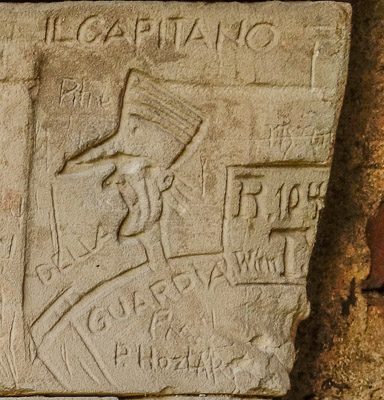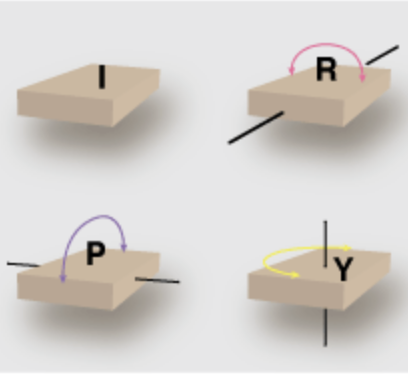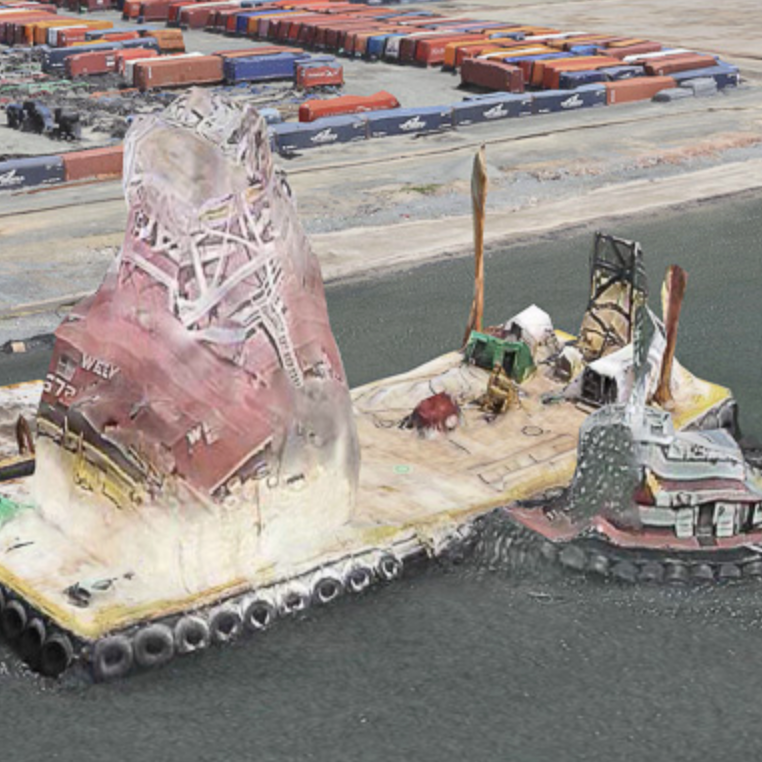The Figure in the Flagstone
by Brian Hayes
Published 5 August 2006
The banner image at the top of this page might be taken for an algorithmic attempt to imitate a fern, although in my opinion the pattern bears a closer resemblance to the two-dimensional corals known as sea fans, or gorgonians. The image below also reminds me of some sort of sessile sea creature—if not a sea fan, then maybe a crinoid.

I discovered this pattern (and several others like it) in the flagstones of a newly laid sidewalk on the campus of Duke University, and I assumed I was looking at a fossil of some kind. However, a helpful and erudite construction worker, who noticed me taking photographs, stopped to tell me that such patterns are of inorganic origin; they are produced by a mineral stain (probably an iron compound) propagating through the pores of the rock. This explanation makes the resemblance to my banner image somewhat more interesting and less of a coincidence. The banner pattern is generated by an algorithm called diffusion-limited aggregation, in which particles move randomly until they happen to touch the tendrils of the growing aggregate; then they stick fast. It’s not hard to imagine how molecules migrating through rock might behave in a similar way, but I have been unable to learn anything more about the origin of these flagstone false fossils. I’ll be grateful if anyone can enlighten me.
Update 2006-08-07: A helpful reader (see comment below, and thankyou Frank Horowitz) has provided exactly the clue I was seeking. Searching for “dentritic patterns” in combination with various other terms turns up lots of relevant references. The one closest to the mark is a splendid discussion by Jonathan Wonham in a blog called Connaissances. There’s also the fascinating story of Mochaware pottery.
Update 2006-08-09: I am deeply grateful to Florian Walchak, who points out (in the comment below) that the question I raised had been answered 300 years ago!
Update 2006-12-06: Further commentary and links.
Responses from readers:
Please note: The bit-player website is no longer equipped to accept and publish comments from readers, but the author is still eager to hear from you. Send comments, criticism, compliments, or corrections to brian@bit-player.org.
Publication history
First publication: 5 August 2006
Converted to Eleventy framework: 22 April 2025



Somewhat unsurprisingly, in geology they are known as “dendrites” or “dendritic patterns”, much like the usage in materials science.
DLA is a common model for “explaining” dendrites in geology.
Hope these buzzwords help you track down the answers you want…
My understanding is that dendrites are branched deposits of black minerals (typically manganese oxides) that have been precipitated from water percolating through fissures or cracks in fine grained rocks.
An intersting aside: In a speech before the American Association for the Advancement of Science on September 8, 1884 by Lester B. Ward (reported on in the January 30, 1885 issue of Science (Vol. 5, No. 104)) one learns that “Dendrite had long been known, and was then generally supposed to represent vegetable matter; but in the year 1700 Scheuchzer overthrew that doctrine, and established its purely mineral character.”
The title of the speech was “A Glance At The History Of Our Knowledge Of Fossil Plants”.
Johann Jakob Scheuchzer was a Swiss scholar born at Zürich in 1672. He made notable contributions to Swiss meteorology and geology. I have not been able to discover just how Scheuchzer made his determination with respect to dendrites. A little more research is in order.